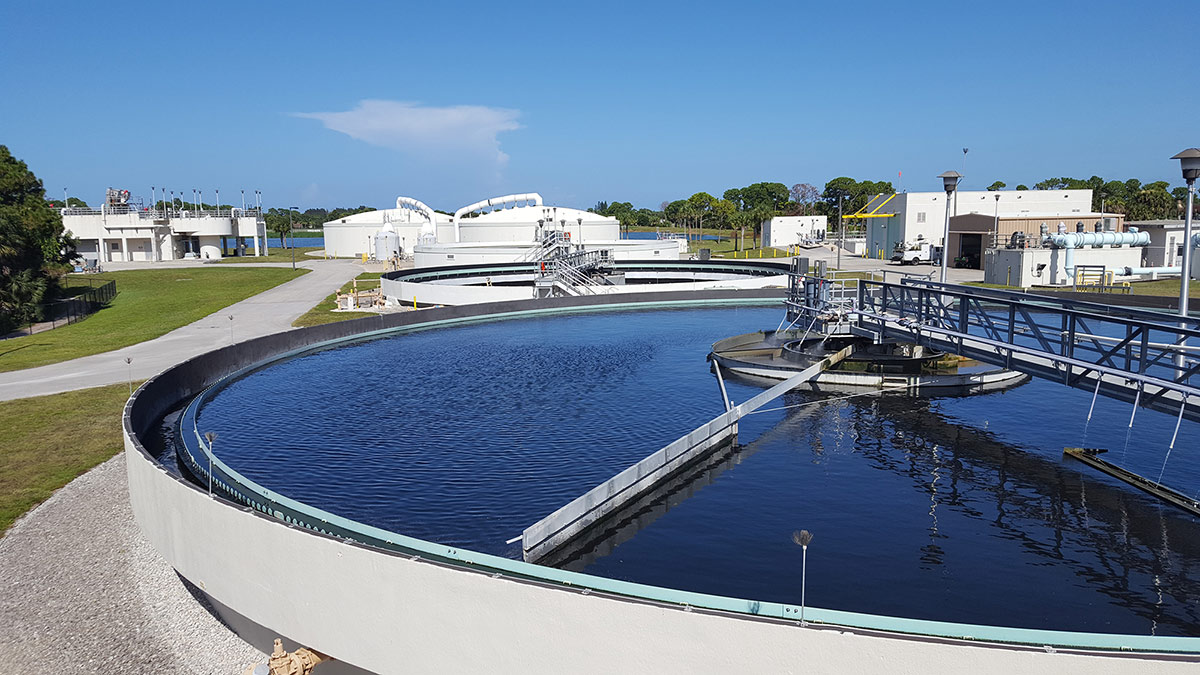Affordable Solutions for Large-Scale Waste Water Treatment Facilities
Affordable Solutions for Large-Scale Waste Water Treatment Facilities
Blog Article
Strategic Approaches to Enhance Waste Water Therapy Efficiency and Decrease Ecological Effect
In the realm of waste water therapy, the pursuit for improved effectiveness and decreased ecological effect is a perpetual obstacle that demands strategic remedies. The combination of sophisticated therapy technologies, energy-efficient procedures, resource healing techniques, enhanced nutrient elimination techniques, and wise tracking and control systems represents a complex framework for resolving these pressing worries.
Advanced Treatment Technologies
Cutting-edge membrane layer purification systems have changed advanced wastewater therapy processes, significantly boosting the elimination of contaminants. These ingenious systems operate by forcing water via a semi-permeable membrane, successfully dividing impurities from the water stream. The membrane layer's tiny pores catch toxins such as bacteria, viruses, and suspended solids, allowing just purified water to travel through. This technology has actually verified to be extremely reliable in getting rid of a vast array of impurities, including pharmaceuticals, heavy metals, and organic compounds, which are often challenging to get rid of via traditional therapy methods.
Moreover, membrane layer filtering systems offer various advantages over standard treatment approaches. In addition, these systems are very functional and can be quickly incorporated right into existing therapy plants or utilized as standalone units for decentralized applications.
Energy-Efficient Processes
The combination of energy-efficient procedures in wastewater treatment systems is important for optimizing source usage and reducing operational prices. By carrying out energy-efficient innovations, therapy plants can considerably lower their carbon footprint and general environmental impact. One crucial approach to improving energy efficiency in wastewater therapy is the use of advanced oygenation systems, such as fine bubble diffusers or surface area aerators, which can improve oxygen transfer effectiveness and lower energy usage. Additionally, integrating power recovery systems, like anaerobic digestion for biogas manufacturing or using excess heat for thermal processes, can assist balance out power needs and advertise sustainability.
Furthermore, optimizing process control and automation through making use of advanced sensing units and keeping an eye on systems can improve general power effectiveness by readjusting procedures in real-time based upon real need and problems. Executing power audits and routinely keeping an eye on energy performance indications are necessary techniques to determine areas for enhancement and track energy-saving campaigns successfully. Generally, the fostering of energy-efficient processes in wastewater therapy not just profits the atmosphere however likewise adds to lasting price savings and functional sustainability.
Resource Recuperation Methods
With an emphasis on optimizing resource utilization and sustainability in wastewater therapy systems, the execution of source recovery strategies becomes an essential element in improving operational performance. Source recovery strategies in wastewater treatment include the identification and removal of important sources from the waste stream, thus turning what was when thought about waste into a beneficial property. By carrying out resource recuperation techniques such as nutrient elimination and recovery, power generation from natural matter, and the manufacturing of reusable water, wastewater treatment plants can reduce ecological effect while taking full advantage of efficiency.

Improved Nutrient Removal Techniques
Executing advanced nutrient elimination methods is crucial for maximizing the effectiveness of wastewater treatment systems. Enhanced nutrient elimination plays a crucial duty you can try this out in decreasing the ecological impact of cured effluent released into water bodies. Among the vital methods utilized for enhanced nutrient elimination is the procedure of biological nutrient elimination (BNR), which entails the elimination of nitrogen and phosphorus through organic processes. click for more This can be accomplished via the usage of specialized microorganisms that can transform nitrogen substances into inert nitrogen gas with denitrification, and build up phosphorus within their cells via a process called boosted organic phosphorus removal (EBPR)

In addition to BNR, advanced therapy methods such as membrane layer bioreactors (MBRs) and created wetlands can likewise be employed to improve nutrient elimination effectiveness. By incorporating these innovative nutrient elimination strategies into wastewater treatment industries, systems and districts can efficiently reduce nutrient contamination and safeguard the environment.
Smart Surveillance and Control Equipment
Using advanced technology, the assimilation of clever tracking and control systems revolutionizes the functional effectiveness of wastewater treatment centers. These systems incorporate innovative sensing units and information analytics to continually keep track of key criteria such as pH levels, turbidity, liquified oxygen, and flow prices in real-time. By gathering and analyzing this information, operators can obtain useful insights into the efficiency of the treatment procedures, enabling aggressive modifications to optimize therapy efficiency.
Smart tracking and control systems also support remote monitoring abilities, enabling drivers to accessibility real-time data and control features from off-site places. This remote accessibility improves functional flexibility and responsiveness, allowing swift treatments in case of system malfunctions or variations in influent quality. The anticipating upkeep capacities of these systems assist stop tools failures and reduce downtime, inevitably improving the overall reliability of wastewater therapy procedures.
Conclusion
Finally, calculated strategies such as innovative treatment innovations, energy-efficient procedures, source recovery techniques, boosted nutrient removal methods, and clever surveillance and control systems play an visit the site important function in boosting wastewater treatment performance and decreasing environmental impact. By implementing these techniques, wastewater therapy plants can improve their overall performance, reduce energy consumption, recover valuable sources, and guarantee compliance with environmental regulations. These approaches are important for sustainable and efficient wastewater monitoring methods.

In conclusion, calculated approaches such as sophisticated therapy innovations, energy-efficient procedures, resource recuperation approaches, enhanced nutrient elimination techniques, and wise monitoring and control systems play a critical role in improving wastewater treatment effectiveness and decreasing environmental effect.
Report this page